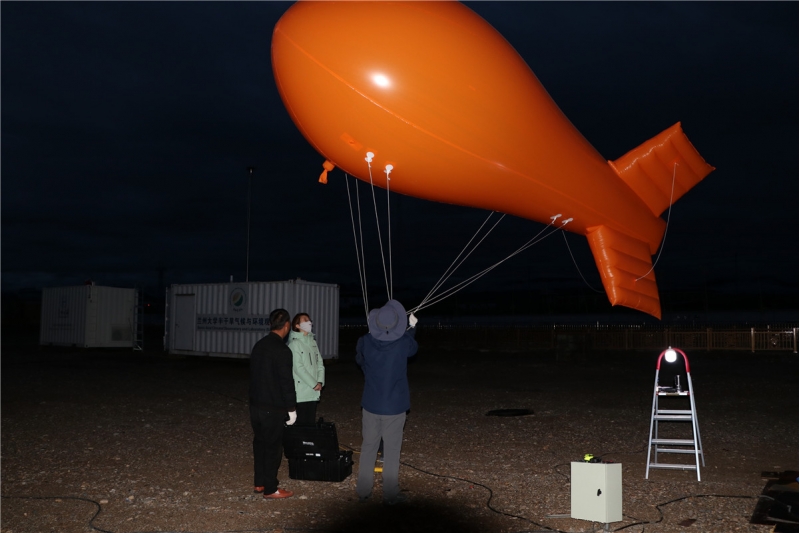In early August, the second Qinghai-Tibet plateau comprehensive science and test team successfully completed the field observation experiment on “dust aerosol and its climate effect” in 2019, and the members returned to Lanzhou successively. The study was launched on June 23, and the team conducted a scientific survey of more than 40 days in the Ali area of Tibet and the Taklimakan Desert of Xinjiang.
The Ali area in Tibet, with an average altitude of 4,300 meters, is known as the “roof of the roof of the world”. It is considered to be “the most unsuitable area for human habitation in China” because of its high cold, lack of oxygen and strong ultraviolet radiation.

The team at the Ali expedition site in Tibet

At 6 o'clock in the morning, the expedition team casts a mooring sounding system at the Ali site
Located on the north side of the Qinghai-Tibet Plateau, the Taklimakan Desert is the second largest desert in the world. More than 80% of the area is mobile sand dunes, and One-third of the year is windy day, resulting in frequent sandstorm activities. The strong sand in the area has a potential impact on the aerosol content over the Tibetan Plateau.
While the team members in the Ali area are adapting to their strong altitude sickness, they must also ensure that various instruments overcome the harsh conditions such as strong local gusts and operate normally. In the Taklimakan Desert, the team members overcome the problems of high temperature and heat, accommodation and inconvenient transportation, and cross the Taklimakan twice to observe and inspect the desert hinterland. All the team members have overcome a lot of difficulties and obtained a variety of first-hand comprehensive observation data, which has been a complete success.

Prof. Huang Jianping casts an air balloon

The team collecting sand samples

The team marching in the desert
Using the comprehensive observation data of the scientific research in the Ali area and the Taklimakan Desert, the physicochemical properties of the dust aerosol on the northern slope of the Qinghai-Tibet Plateau, the content of dust aerosols in the atmospheric particulates of the plateau, and the quantification of local and foreign sources (mainly Taklimakan Desert) can be clarified.
Based on the comprehensive observation data in Ali area and Taklimakan Desert, the physical and chemical properties of dust aerosols on the northern slope of Qinghai-Xizang Plateau, the content of dust aerosols in atmospheric particles on the plateau, the contribution of dust transport from local and foreign sources (mainly Taklimakan Desert) to dust content over the plateau can be clarified, and the effects of saline, alkali and microorganisms on carbon fluxes in quicksand in Taklimakan Desert as well as climatic effects of biological aerosols can be deeply understood.
Background of the news
The second comprehensive scientific expedition of the Qinghai-Tibet Plateau began in 2019 and lasted for 5 years. Lanzhou University is one of the important participating units of the second Qinghai-Science expedition. Prof. Huang Jianping took the lead in undertaking the scientific research of “dust aerosol and its climatic environmental effects” and established “the comprehensive distribution of dust aerosol transmission on the north side of the Qinghai-Tibet Plateau” in Lanzhou University. The scientific research team and the “Yajiang Middle and Upper Surfaces and Snow Ice Dust Characteristics Scientific Research Team” aim to explore the Qinghai-Tibet through a comprehensive scientific investigation of the surface of several key areas of the Qinghai-Tibet Plateau. It aims to explore the frontier scientific issues such as the temporal and spatial evolution history, control factors, physicochemical characteristics, radiative forcing and climate response of dust activities in the Qinghai-Tibet Plateau, and propose that scientific quantitative results of dust aerosol characteristics and climatic environmental effects on the Qinghai-Tibet Plateau has important theoretical significance and application value to the environmental protection.
